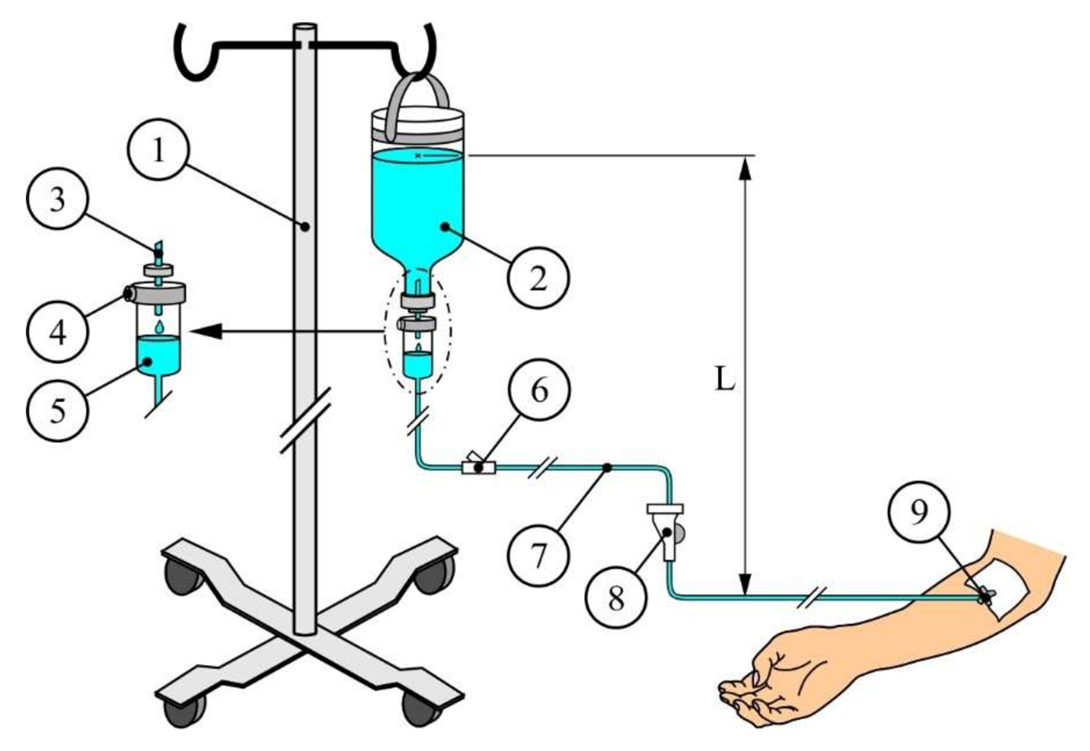A severely dehydrated client has come in for rapid administration of IV fluids. Which of the following solutions is the best solution for rapid infusion?
Normal Saline
1/2 Normal Saline
D5W (5% Dextrose in Water)
D5 1/2 Normal Saline
The Correct Answer is A
Choice A reason: This is a correct answer because normal saline is an isotonic solution, which means it has the same osmolarity as the blood plasma. It does not cause any fluid shifts between the intracellular and extracellular compartments, and it can help restore the fluid balance and the blood pressure of the dehydrated client.
Choice B reason: This is not a correct answer because 1/2 normal saline is a hypotonic solution, which means it has a lower osmolarity than the blood plasma. It causes fluid to shift from the extracellular to the intracellular compartment, which can lead to cellular swelling and edema. It is not suitable for rapid infusion, as it can cause hemolysis and hypotension.
Choice C reason: This is not a correct answer because D5W (5% Dextrose in Water) is an isotonic solution when it is in the IV bag, but it becomes hypotonic once it enters the body, as the dextrose is rapidly metabolized and only water remains. It causes fluid to shift from the extracellular to the intracellular compartment, which can lead to cellular swelling and edema. It is not suitable for rapid infusion, as it can cause hemolysis and hypotension.
Choice D reason: This is not a correct answer because D5 1/2 normal saline is a hypertonic solution, which means it has a higher osmolarity than the blood plasma. It causes fluid to shift from the intracellular to the extracellular compartment, which can lead to cellular shrinkage and dehydration. It is not suitable for rapid infusion, as it can cause hypernatremia and fluid overload.

Nursing Test Bank
Naxlex Comprehensive Predictor Exams
Related Questions
Correct Answer is D
Explanation
Choice A reason: Drinking a minimum of 12 ounces of fluid with each meal is not recommended for a client who has dumping syndrome. Fluids can increase the gastric volume and accelerate the gastric emptying, leading to more severe symptoms. The nurse should advise the client to drink fluids between meals, not with meals.
Choice B reason: Choosing foods that are high in simple carbohydrates is not recommended for a client who has dumping syndrome. Simple carbohydrates can cause a rapid rise and fall of blood glucose levels, resulting in hypoglycemia and weakness. The nurse should advise the client to choose foods that are high in protein and fat, and low in sugar.
Choice C reason: Staying upright when eating and for 30 minutes afterward is not recommended for a client who has dumping syndrome. This position can facilitate the gastric emptying and worsen the symptoms. The nurse should advise the client to lie down after eating to slow down the gastric emptying.
Choice D reason: Eating several small meals daily spaced at equal intervals is recommended for a client who has dumping syndrome. This can help reduce the gastric volume and pressure, and prevent the rapid delivery of food into the small intestine. The nurse should advise the client to eat four to six small meals per day, and avoid skipping meals.
Correct Answer is C
Explanation
Choice A reason: Constipation is not a priority finding for a client with peptic ulcer disease. It may be a side effect of some medications or a result of decreased fluid intake, but it does not indicate a serious complication.
Choice B reason: Dyspepsia is a common symptom of peptic ulcer disease, but it is not a priority finding. It refers to indigestion or discomfort in the upper abdomen, which may be relieved by antacids or other medications.
Choice C reason: Hematemesis is a priority finding for a client with peptic ulcer disease. It indicates bleeding from the ulcer, which can lead to shock and anemia. The nurse should monitor the client's vital signs, hemoglobin level, and blood loss, and notify the provider immediately.
Choice D reason: Epigastric discomfort is another common symptom of peptic ulcer disease, but it is not a priority finding. It refers to pain or burning in the upper abdomen, which may be worsened by food intake or stress. The nurse should provide comfort measures and educate the client on dietary and lifestyle modifications.
Whether you are a student looking to ace your exams or a practicing nurse seeking to enhance your expertise , our nursing education contents will empower you with the confidence and competence to make a difference in the lives of patients and become a respected leader in the healthcare field.
Visit Naxlex, invest in your future and unlock endless possibilities with our unparalleled nursing education contents today
Report Wrong Answer on the Current Question
Do you disagree with the answer? If yes, what is your expected answer? Explain.
Kindly be descriptive with the issue you are facing.
